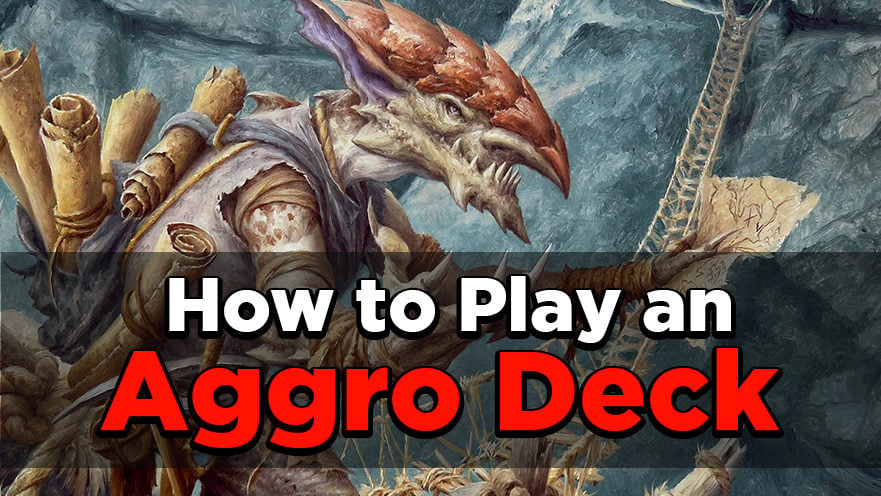How many ways are there to count to twenty?
Aggressive decks in Magic and similar card games are often characterized as simpler and less skill-intensive than others. The idea is that playing a reactive midrange or control deck forces you to adapt to each opponent. But to excel with aggro is to play predictively – you need to anticipate how your opponents can react, and sequence your plays to apply pressure while limiting their outs.
To do this successfully, you must understand how your aggro deck of choice functions. As the defining trait of beatdown is having the fast kill, you’ll be optimizing your count to twenty along some axis. Is this deck built for mana efficiency, or card efficiency? Can you afford to lose creatures to get in damage? Is it resilient to removal?
You can have a viable aggro deck in each of Magic’s five colors, and they’ll all answer these questions differently. Dividing the broad slate of aggro into specific categories can help you quickly home in on the right answers for the one you’re playing — or facing.
THE SLIGH OLD DOG

Lightning Bolt is in many ways the fundamental yardstick of Magic design. Burn (a.k.a. Sligh or Red Deck Wins) fills the same role for a Constructed metagame, keeping greedy decks honest with fast, consistent damage. A mix of creatures and burn spells is the baseline for aggro in nearly every Constructed format, and for good reason.
Burn is the Mario of aggro decks — solid all around. Its defining characteristic is mana efficiency, playing multiple cheap spells per turn to outpace enemy interaction. Running out of cards fast doesn’t matter if you’ve already won the game! Burn also has great reach, since Lightning Bolt usually does three damage regardless of board state.
Creatures help Burn achieve more respectable card efficiency. Attacking with a one-mana 2/1 is as good as casting Shock, and two swings do more damage than a Bolt! Since these creatures eventually get neutralized by blockers or removal, Burn needs cheap creatures with haste so they can get out ahead of these defenses.

It’s important to squeeze every bit of damage out of those first few creatures, which can mean losing a few to blocks or spending burn spells on blockers to clear a path. Don’t worry about the damage you may take from your opponent on their attack – Burn decks are designed to race on life. Getting your last burst of damage from Bolts effectively makes you a turn faster. Spending cards inefficiently and running out before you kill them is how opponents can wrest back control of the game.
HIT THEM WITH THE CURVE STOMP
“Stompy” decks have a fundamentally simple construction. You use all your mana each turn to play the most powerful aggressive creatures possible. Unlike Burn, a Stompy deck wants to continue using all its mana for as long as possible, so it values card efficiency and tries to curve out with more expensive creatures. Instead of relying on direct damage to finish the job once blockers are in play, you blow by them with large, evasive creatures.
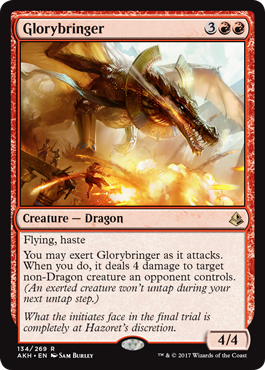
Stompy decks prioritize the largest possible creatures — you want the enemy to be chump-blocking, not trading. Therefore, Stompy decks are usually green, but they can also be red or even colorless. Another typical green feature of many Stompy decks is early mana acceleration like Llanowar Elves or Eldrazi Temple.

Because it invests so many resources into each threat, Stompy decks can be vulnerable to spot removal. But some formats have more conditional removal, and you can easily make that removal awkward by choosing the right threats. In older formats, Stompy complements its creatures with powerful prison effects like Blood Moon, which tie the opponent up while you beat them down.
JUST MY TYPE OF PEOPLE
Burn and Stompy decks approach the fundamental aggro concept of “efficiency” as a test applied to each card. You pick out the cheapest, fastest damage-dealing cards, or the most over-statted creatures available, and put them in a pile. Since most aggro decks lack ways to control their draw, a pile of individually strong cards makes sense. But you can also evaluate the damage-dealing efficiency of cards as part of a synergistic deck — and that’s where you get Tribal strategies. Whether it’s Merfolk, Elves, Humans or Slivers, when every card you play multiplies your board strength, the damage adds up to twenty very quickly.
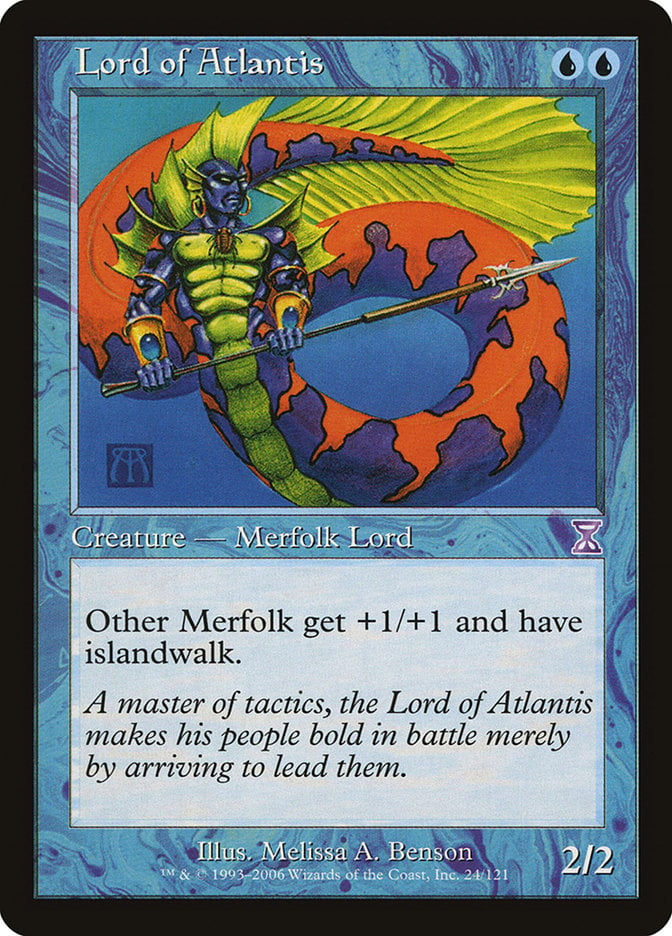
“Lord” creatures are the signature effect of Tribal decks, granting a static buff to other creatures of their type. These cards drive the rest of your card choices — mostly cheap on-type creatures so you can flood the board fast. This leaves you vulnerable to sweepers, and any effect that removes a lord mid-combat can be a blowout. In general, it’s best to give your opponent as few draws as possible; fortunately, few aggro decks can snowball as quickly as Tribal aggro.
The other thing to consider here is the unique attributes of your tribe. The best Tribal creature types in Magic always bring something extra to the table. Some have in-built combo wins or significant reach to give you another axis of attack, some are resilient to removal, and many tax or disrupt opposing interaction. Make sure to leverage your specific strengths.
A TOKEN EFFORT
Tribal decks find competitive efficiency by playing as many creatures as possible, multiplying the value of team-wide buffs from lords. A similar group of decks exploits this formula without the creature-type constraint, opening up more cards for inclusion.
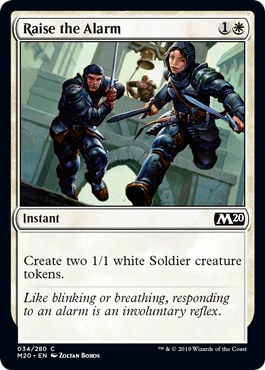
Cheap, constantly-buffing lords have to be replaced by more expensive, often temporary buff spells. In return, “Go Wide” decks get to play all the most efficient ways of making creatures and tokens. They are still vulnerable to sweepers, but not having lords to target lets them laugh off spot removal.
There are large differences in how Go Wide and Tribal decks approach combat. Tribal wants to make its creatures too big to block using lords. Go Wide decks have tiny creatures that will die to most blockers. You attack when your numbers advantage is big enough, trading some of those numbers to get damage with the unblocked ones. Team-buffing spells significantly improve this equation.
Like Burn, you spend cards quickly to generate this numbers advantage. Knowing when to start spending cards to close the game quickly is the biggest skill for Go Wide players to work on.
A NOBLE SACRIFICE
“Aristocrats” decks also leverage creature tokens, and present similar combat equations based on trading those bodies for damage. Instead of maximizing the economy of team-pumping spells, they use sacrifice effects to make huge attacks or deal damage directly. Three 0/1 tokens represent six damage with Vampire Aristocrat attacking… and another three if Mayhem Devil is there, too.
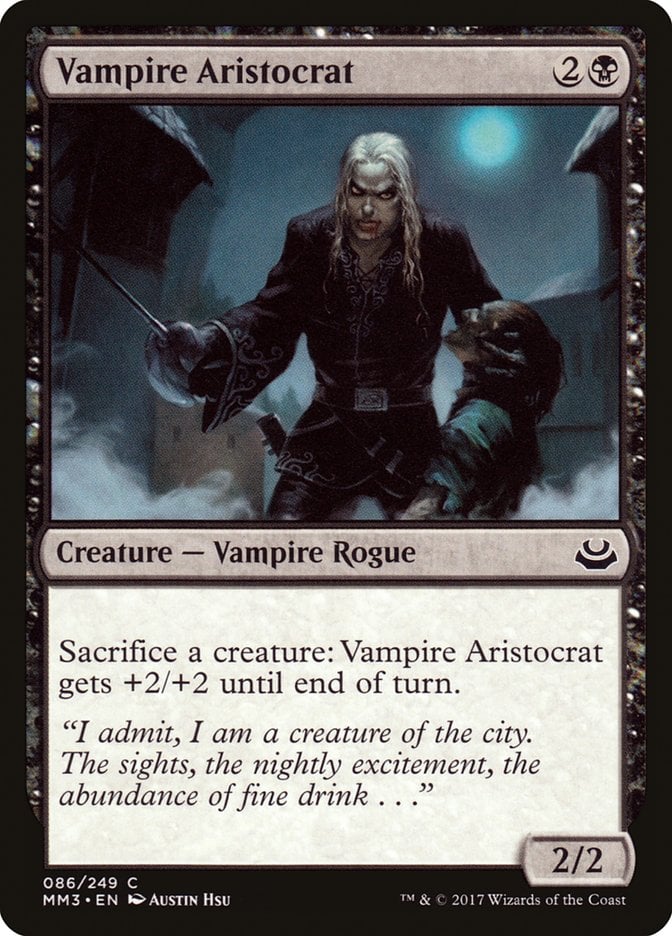
In many ways, Aristocrats functions like a combo deck. Sacrificing often costs no mana, so as soon as conditions are right, you can cash in your whole board to win. Having effects trigger when your creatures die also provides insurance against sweepers, which gives Aristocrats decks an advantage over Tribal and Go Wide strategies.
But the combo-like nature of Aristocrats can also work against you. The ideal board of tokens + sac outlet + death trigger payoffs doesn’t always come together. Those games where it doesn’t, or when opposing disruption keeps you off it, tend to be very difficult. For a closer look at Aristocrats, check my recent primer on playing the deck in Standard.
TEMPO: THE RARE BIRD
The final variety of deck is very unique. Tempo decks operate almost like turbo-control! Instead of defending before deploying a game-ending threat, Tempo plays its threat immediately and then prevents the opponent from doing anything relevant. By making the rest of the game very slow, Tempo “goes fast” in the most blue way possible.
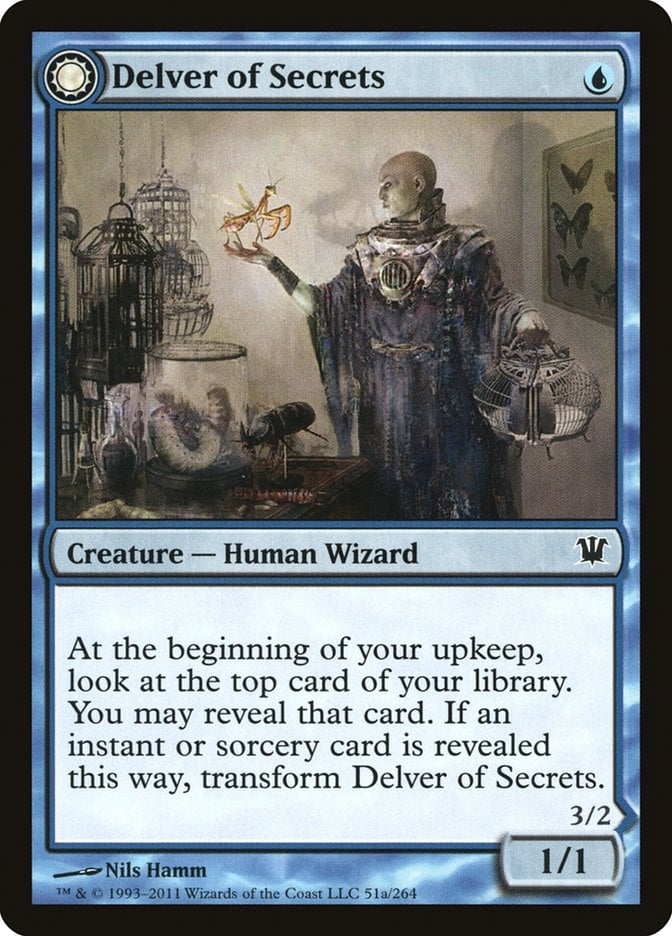
Tempo decks must hold up interaction for nearly the entire game and are therefore defined by their one-drops. Delver of Secrets in Legacy and Death’s Shadow in Modern are two definitive examples. You can round out your Tempo deck with cheap interaction and card-draw spells to ensure you can match opponents card-for-card. It’s rare that all of these tools exist at the same time in Standard, but the Mono-Blue Tempo was very successful earlier this year.
The need for card selection and countermagic makes blue the dominant color for Tempo. However, alternative approaches exist in any color that can protect its creatures. Boros Feather and Bogles both demonstrate Tempo play patterns without necessarily playing Islands.
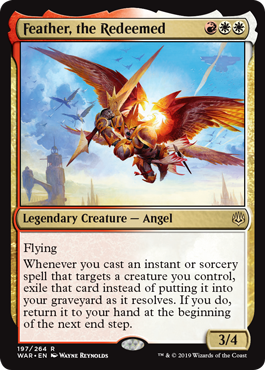
And there you have it: the distinct features of Magic’s predominant aggro archetypes. Each deck will have its own nuance, but identifying its category will help get you in the right mindset faster. These archetypes also apply to Limited play – you can easily draft a Go Wide or Tempo deck if you understand what effects are important to each. I hope this guide will help you count to twenty as quickly and as frequently as possible.

Tom’s fate was sealed in 7th grade when his friend lent him a pile of commons to play Magic. He quickly picked up Boros and Orzhov decks in Ravnica block and has remained a staunch white magician ever since. A fan of all Constructed formats, he enjoys studying the history of the tournament meta. He specializes in midrange decks, especially Death & Taxes and Martyr Proc. One day, he swears he will win an MCQ with Evershrike. Ask him how at @AWanderingBard, or watch him stream Magic at twitch.tv/TheWanderingBard.

